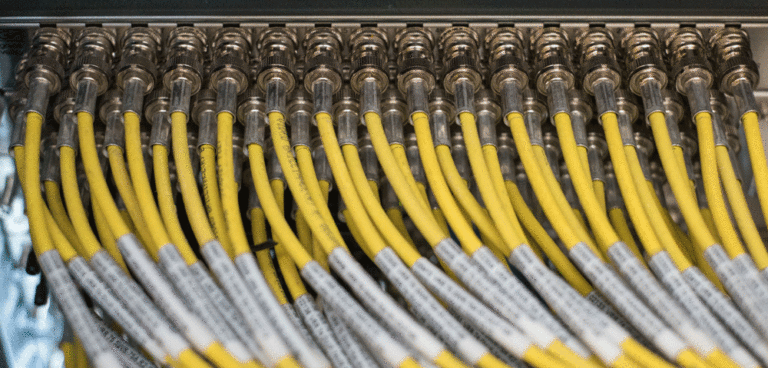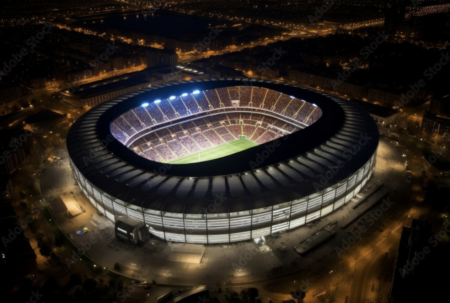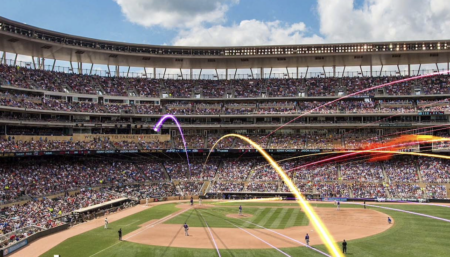Three leading communications experts talk to Stadia about how networking and connectivity are vital for today’s modern venues.
Included in the discussion are Ron Tellas, technology and applications manager at Belden; Piercarlo Giannattasio, DAS and small cells business line director at Cellnex Telecom; and Ken Martin, general manager and director of global sales at Cisco Sports and Entertainment.
How can venues benefit from real-time data visualization? Is privacy a problem?
Ron Tellas: Privacy isn’t necessarily a ‘problem’, but it needs to be managed. It should be the fans’ choice how much information they share to customize the experience. Once someone sees how their information is used to build an environment to their liking, it builds trust and willingness to share. A good example is the generation of a real-time, 3D image of a play with a personal device as it connects fans emotionally to the game.
Piercarlo Giannattasio: Many software solutions leverage stadium data from face analysis and mood measurement to improve audience experiences. Other solutions improve security and crowd management, or automate operations and maintenance. Meanwhile, personal information requires consent, or anonymity.
Ken Martin: The infrastructure allows teams to capture information about who is coming, where they are, what they’re doing, and for how long. The real opportunity lies in marrying this new data with existing fan profile data to provide greater customization. Sharing will be determined at player, team and league levels – and of course, by the fans themselves.
How do the threats of cybersecurity influence the installation of a communications solution?
RT: Separate public and private wireless networks and access points are needed. The building backbone system should also be separated from these networks. Within the private network, traffic should be segregated even more using different physical switches and routers, or VLANs. Access should be limited to exactly what’s needed through VPNs, or by limiting specific traffic and assets. Walled-off environments make it hard for an attacker to gain access to the network.
PG: It is key that the MNOs meet their regulatory ‘privacy and security’ mandate for their subscribers’ information to guarantee private information. We monitor solutions 24/7, so service interruptions are noticed in real time.
KM: Cybersecurity is at the forefront of everyone’s mind. Security isn’t something we add to our network; it is part of the fabric of the product and delivers end-to-end threat protection for fans.
What are the top priorities stadium owners should consider when upgrading to a ‘smart stadium’?
RT: It requires a cabling and connectivity infrastructure that can support all activity and technology, including high bandwidth levels and reliable wireless connections with high throughput. Without these foundations, even the best systems won’t work effectively.
PG: Telecommunications infrastructure has to be easily upgradable. An open network managed by a neutral host guarantees partners can access infrastructure and use it in a transparent and non-discriminatory manner.
KM: The network is the foundation of fan experience and back-of-house operations. A single, secure, converged platform is vital as more things become connected, providing fans with unique stats, content and promotions.
How have DAS and small cell systems changed the landscape of networking and connectivity?
RT: Connectivity is vital outside as the atmosphere extends to courtyards, patios and parking-lot tailgates into the city. Connecting the stadium area benefits the entire city. Distributed antenna systems make use of small antenna to improve connectivity in spots with poor cellular coverage.
PG: Data consumption occurs before, during and after games, inside and outside stadia. The experience must be seamless. Cellnex manages Advanced DAS and Small Cells solutions with an integral approach including towers and rooftop macro-sites.
KM: The newest stadia – including US Bank Stadium in Minneapolis, SunTrust Field in Atlanta, Fiserv Forum in Milwaukee, and others – focus equally on developing the area around the stadium. Fans want a holistic experience – from restaurants to shopping to entertainment, before and after games.
To read the full article, click here.





